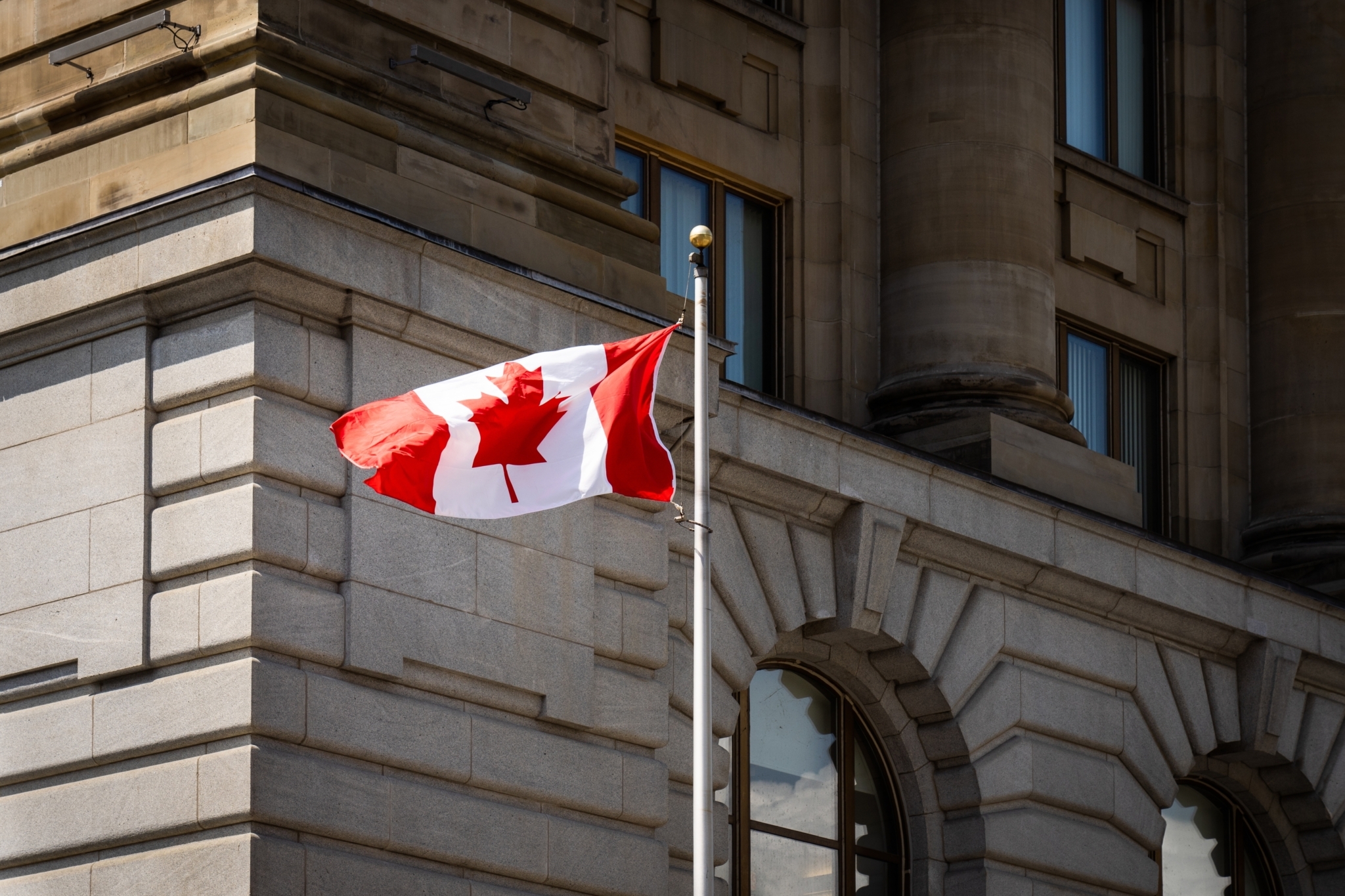February 21, 2025 | Quiet Counsel | 7 min read
Outlook 2025, Part I: Evolution of the American Ethos
As I write in early February, President Trump has confirmed and then deferred the sweeping tariff regime on Canadian and Mexican goods he had been threatening, and then slapped 25% on US imports of steel and aluminum. To read about potential impact of Trump policies on Canadian companies and markets, see the companion piece to this year’s Outlook, “Outlook 2025, Part II: Potential Trump Effects in 2025.” Below, we provide a history of how we got to where we are – both from an investing perspective, and a political one – and offer our outlook for the economy and markets in 2025 and beyond.
Executive Summary
- End of Easy Money – Ultra-low rates fueled stock growth post-2008, but inflation and policy shifts have brought rates back to normal levels.
- US Debt is Manageable – Debt remains sustainable as long as GDP growth outpaces borrowing costs, with labour productivity a key factor.
- Higher Interest Rates Will Persist – Limited rate cuts are expected, but the era of near-zero rates is over, impacting growth and inflation.
- Investment Strategy – Higher yields point to ~4% bond returns going forward and equities should range from 4-6% long-term depending on region. We then target an additional 2% for equities.
The Great Financial Crisis as Prelude
In 2008, as the world stared down the barrel of the worst contraction since the Great Depression, with US real estate staggering and global financial institutions on the brink of collapse, it’s no surprise that policymakers put their back into the response. Bear Stearns and Lehman Brothers were allowed to perish but the remaining financial institutions had their self-inflicted wounds dressed and healed.
Regulators passed the Dodd-Frank Act in 2010 to help prevent a repeat of the Great Financial Crisis but the most important legacy for financial markets was global central banks’ decisions to slash interest rates to near-zero for the 10+ years that followed the crisis. These low interest rates helped homeowner debt work its way through the system, but they also produced a decade of phenomenal stock market returns, especially among growth stocks
At the same time, China continued its ascent, supplying an ever-growing global appetite for cheap offshore goods. Aside from commodities, which enjoyed robust growth from Chinese demand, central bankers struggled to get inflation up to their targets. Globalization facilitated another decade of wealth creation for US importers and offshore exporters, but at the cost of the US manufacturing base.
Trump’s popularity among blue collar voters is understandable through this lens as promises to revitalize the US manufacturing base resonate loudly with under- and unemployed workers who have seen their economic security vanish.
Inflation resurfaced in 2022 due to Covid supply chain kinks (both goods and labour) and as a result of the trillions of dollars pumped into the financial system to keep economies afloat through the pandemic. Central banks hiked interest rates rapidly and dramatically to reign in that inflation, sending bonds and stocks, especially interest-rate sensitive ones like utilities and REITs, into freefall. Technology stocks also fell dramatically, with the NASDAQ, a popular tech-heavy index, down -33% in USD terms in 2022 alone.
While inflation and interest rates have come down in the last year, the reality we will inhabit going forward will likely be different from the extraordinary one of the last 15. As discussed below, “normal” interest rates will look more like the 1990s than the 2010s while protectionist policies blow up global supply chains in favour of “Made in the USA.”
US Debt is Big but Sustainable
We are often asked by clients if the US debt load is sustainable. It may surprise you to learn that despite enormous issuance by the US Treasury since 2009, the aggregate debt level in the US as percentage of GDP has actually not increased much over the last 15 years. How is that possible?
Debt has migrated from individuals to the government. Following the Great Financial Crisis, policymakers wanted to avoid the carnage that the 1930s “austerity” approach to the Great Depression created. Instead, they decided to migrate the debt from consumers to the Federal Reserve’s balance sheet through financial repression and fiscal stimulus. As Figure 1 shows, between 2009 and 2024 federal debt increased from 54% of GDP to 106% while household debt fell from 98% to 71%. Together with GDP growth over the period, Debt-to-GDP remains at roughly 2.5-to-1. Unlike individuals, the US government has significant capacity to service the debt.
Figure 1: US Debt-to-GDP, 2009 and 2024

Growth Can Fund Deficits. Another way to think about debt sustainability is to compare the cost of debt to the growth in the tax base. Your tax base grows with your economy, so as long as nominal GDP grows faster than your cost of borrowing (Treasury yields), you’re able to maintain that level of debt.
Figure 2 shows that US GDP growth has in fact exceeded yields since 2009 (ex- a few months of Covid). In other words, everywhere the dark line exceeded the light blue one, the tax base was growing faster than the US’ cost of the debt, so the economy was in net growth mode.
Figure 2: US Nominal GDP Growth vs 10-Year Treasury Bond Yield, 1973 – 2024

Productivity is Carrying the Day. Economists like to look at how real yields compare to real GDP growth (both terms are after inflation). Over an 80-year history, real yields have averaged around 0.5 – 1.0% for short-term and 1.0 – 1.5% for long-term yields, so the US just needs real GDP growth at or above these levels to sustainably finance its debt. As Figure 3 shows, US real GDP growth is well above 1.5%, and it’s all about labour productivity. The Americans’ consistent productivity growth helps support their debt levels through real growth in the economy and tax revenues.
Figure 3: Contributors to Real GDP Growth Across Countries, 2019-2024

Is the US Dollar Also Safe?
A corollary to the “unsustainability of US debt” argument is that it puts the USD at risk. We don’t see this as a risk because what backs the US currency is the ability to tax households and businesses, and the US government has the sole ability to generate enormous revenue through taxation. The country has no national sales tax and Figure 4 shows that at 25.2%, the US’ tax-to-GDP ratio ranks 32nd out of 38 OECD countries – 8.5% points less than the OECD average and 9.7% less than Canada’s. They just need political courage to do it, but if push came to shove, they absolutely have full rights to tax.
In addition to fiscal sustainability, the USD has the added benefit of continuing to be the world “reserve currency,” so over half of all global trade is denominated in USD, over half of foreign debt issuance is in USD, and over half of global currency reserves continue to be denominated in USD. These continuous sources of demand for US dollars therefore provide constant support to the currency.
Figure 4: 2023 Tax Revenues as a Percentage of GDP

Interest Rate Cuts are Coming to an End
For the Bank of Canada (BoC), the close of 2024 and first quarter of 2025 are about normalizing interest rates back down to appropriate levels, given inflation expectations. With core inflation now within the BoC’s 1-3% target, it is expected to cut once more in the second quarter to 2.75%, and that is expected to be it for some time. The US Federal Reserve held rates in its recent meeting and is expected to cut twice more in 2025, to land at 4.0%.
Figure 5: Bank of Canada Overnight (Interest) Rates

There are two things of note about these expected “terminal rates”: 1) Canada is expected to remain 1.25% below the US, which will continue to put pressure on the Canadian dollar; and 2) 2.75% is a far cry from the near-zero easy money of the last 15 years, but in line / low relative to the decades that preceded it.
Expected Returns
The developing factors detailed in Part II – de-globalization, demographics, isolationism and possibly tariffs – will result in wage pressure and other inflationary effects, so keeping inflation down to 2.0 – 2.5% will therefore likely require interest rates to sit in this higher (historically normal) range. As we estimate the return on a bond portfolio as its yield, higher go-forward interest rates are good for bond performance. The Leith Wheeler Core Active Bond Fund ended 2024 with a yield of 3.8%, in line with our back-of-the-envelope estimate of about 4% for bonds.
Conversely, higher rates put a brake on economic growth, which may temper equity returns going forward. Our internal estimate for long-term equity performance – which in our view is the only way to think about equities, given the risk involved in owning them and the time horizon required to own them – is about 4-6%, depending on the region, before our value-added target of 2%.
We regard certain markets as more or less attractive over time, so we will tilt client portfolios to reflect these views. At present, we are concerned about valuations in large cap US stocks, so have tactically underweighted them within balanced client portfolios (underweight global in accounts that don’t hold US large caps separately). We are deploying those funds into a mix of Canadian and US small/mid-cap stocks.






